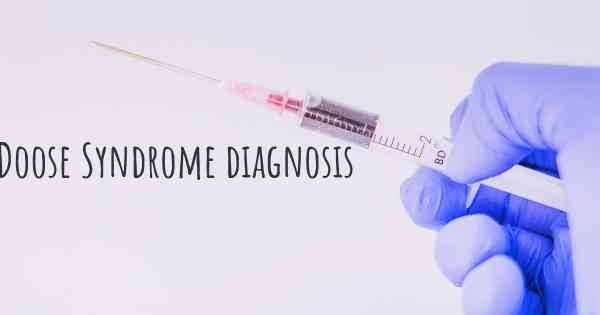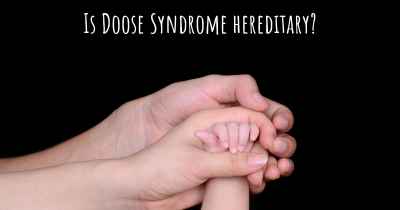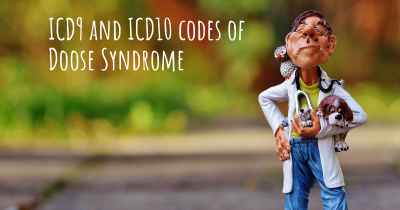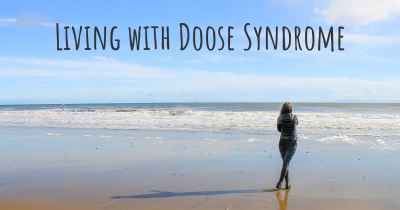How is Doose Syndrome diagnosed?
See how Doose Syndrome is diagnosed. Which specialists are essential to meet, what tests are needed and other useful information for the diagnosis of Doose Syndrome

Diagnosing Doose Syndrome
Doose Syndrome, also known as Myoclonic-Astatic Epilepsy (MAE), is a rare form of epilepsy that typically begins in early childhood. It is characterized by a specific type of seizure called myoclonic-astatic seizures, as well as other seizure types such as absence seizures and generalized tonic-clonic seizures. Diagnosing Doose Syndrome can be challenging due to its complex nature and the need to rule out other possible causes of seizures.
Medical History and Physical Examination
The first step in diagnosing Doose Syndrome is a thorough medical history and physical examination. The doctor will ask detailed questions about the patient's symptoms, seizure characteristics, and any family history of epilepsy or other neurological disorders. They will also perform a physical examination to look for any signs of neurological abnormalities.
Electroencephalogram (EEG)
An electroencephalogram (EEG) is a crucial diagnostic tool for Doose Syndrome. It records the electrical activity of the brain using electrodes placed on the scalp. In Doose Syndrome, the EEG typically shows a specific pattern called a burst-suppression pattern. This pattern consists of bursts of high-amplitude electrical activity followed by periods of little to no activity. The presence of this pattern can help differentiate Doose Syndrome from other types of epilepsy.
Video EEG Monitoring
In some cases, a routine EEG may not capture the characteristic burst-suppression pattern. In such instances, video EEG monitoring may be necessary. This involves recording the EEG while simultaneously monitoring the patient's behavior and movements through video cameras. Video EEG monitoring allows doctors to correlate the patient's clinical symptoms with the EEG findings, providing a more accurate diagnosis.
Genetic Testing
Genetic testing plays a crucial role in diagnosing Doose Syndrome. Recent research has identified several genes associated with the condition, including SCL2A1, GABRG2, and SLC6A1. Genetic testing can help confirm the diagnosis of Doose Syndrome and may also provide valuable information about the prognosis and potential treatment options.
Neuroimaging
Neuroimaging studies such as magnetic resonance imaging (MRI) or computed tomography (CT) scans are often performed to rule out any structural abnormalities or brain lesions that may be causing the seizures. While these imaging studies may not directly diagnose Doose Syndrome, they are essential in excluding other potential causes of seizures.
Other Diagnostic Tests
In some cases, additional diagnostic tests may be necessary to rule out other conditions that can mimic Doose Syndrome. These may include blood tests to check for metabolic disorders, lumbar puncture to analyze cerebrospinal fluid, or other specialized tests as deemed necessary by the healthcare provider.
Conclusion
Diagnosing Doose Syndrome requires a comprehensive approach that involves a detailed medical history, physical examination, EEG, video EEG monitoring, genetic testing, and neuroimaging. The combination of these diagnostic tools helps healthcare professionals differentiate Doose Syndrome from other types of epilepsy and rule out other potential causes of seizures. Early and accurate diagnosis is crucial for initiating appropriate treatment and managing the condition effectively.








